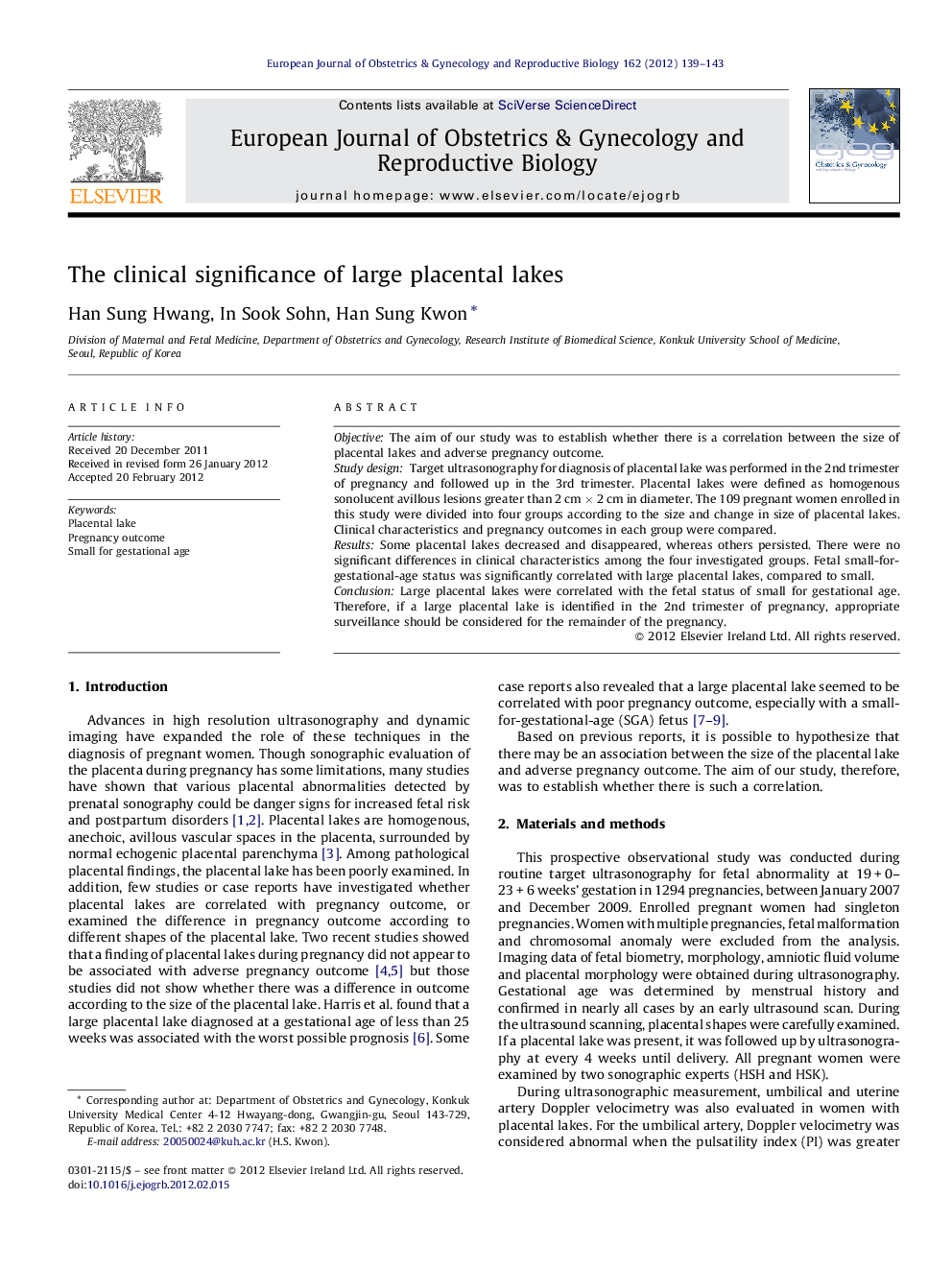| Article ID | Journal | Published Year | Pages | File Type |
|---|---|---|---|---|
| 3920574 | European Journal of Obstetrics & Gynecology and Reproductive Biology | 2012 | 5 Pages |
ObjectiveThe aim of our study was to establish whether there is a correlation between the size of placental lakes and adverse pregnancy outcome.Study designTarget ultrasonography for diagnosis of placental lake was performed in the 2nd trimester of pregnancy and followed up in the 3rd trimester. Placental lakes were defined as homogenous sonolucent avillous lesions greater than 2 cm × 2 cm in diameter. The 109 pregnant women enrolled in this study were divided into four groups according to the size and change in size of placental lakes. Clinical characteristics and pregnancy outcomes in each group were compared.ResultsSome placental lakes decreased and disappeared, whereas others persisted. There were no significant differences in clinical characteristics among the four investigated groups. Fetal small-for-gestational-age status was significantly correlated with large placental lakes, compared to small.ConclusionLarge placental lakes were correlated with the fetal status of small for gestational age. Therefore, if a large placental lake is identified in the 2nd trimester of pregnancy, appropriate surveillance should be considered for the remainder of the pregnancy.
